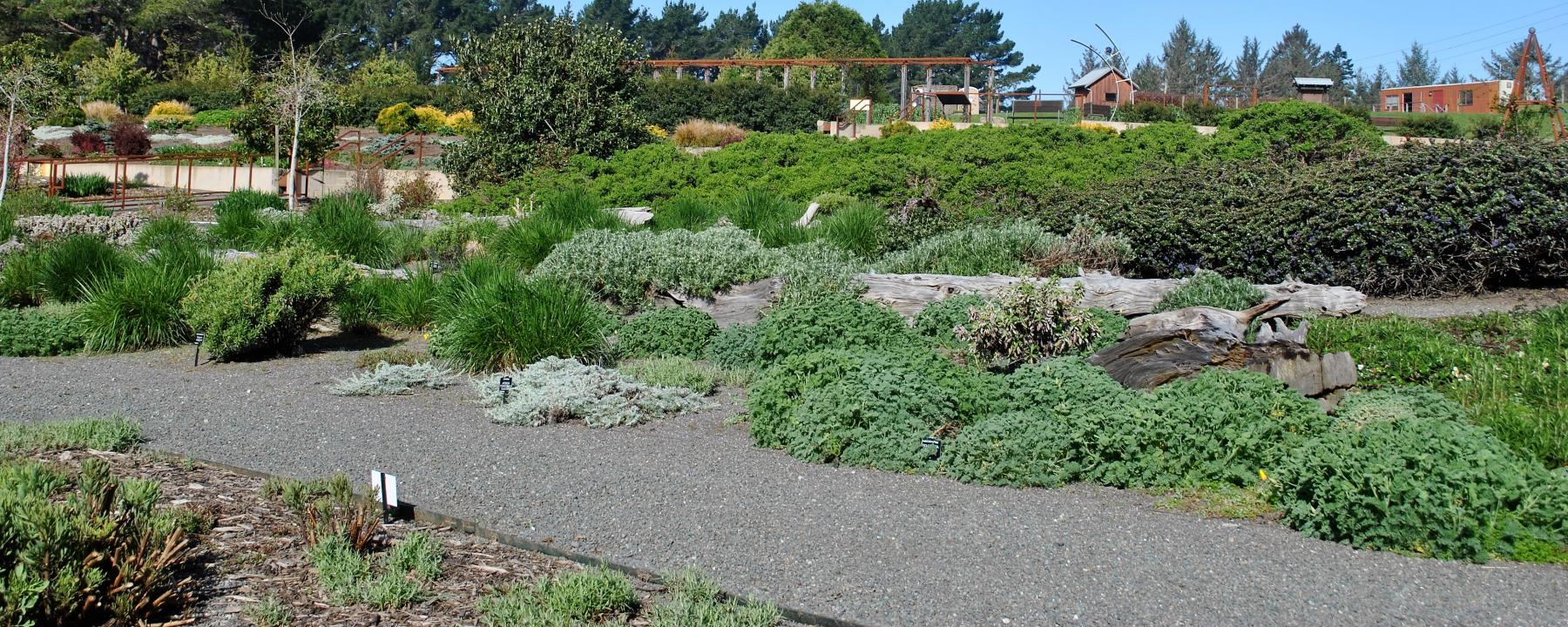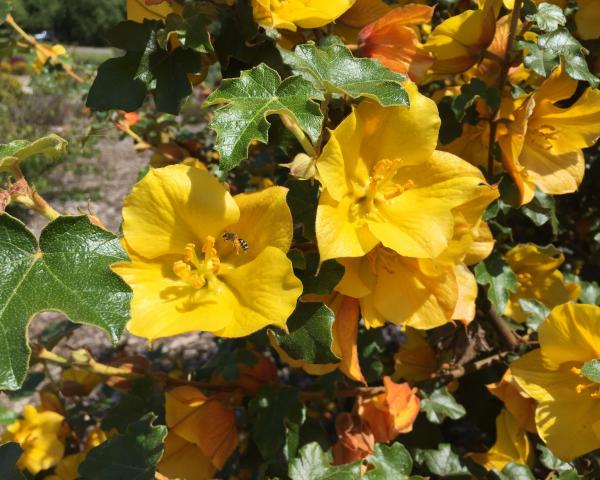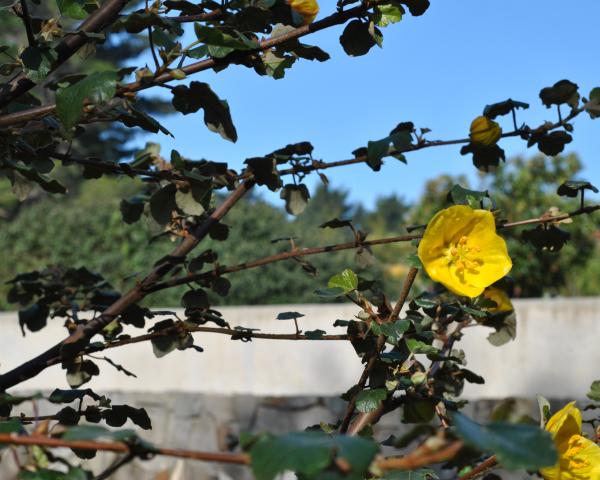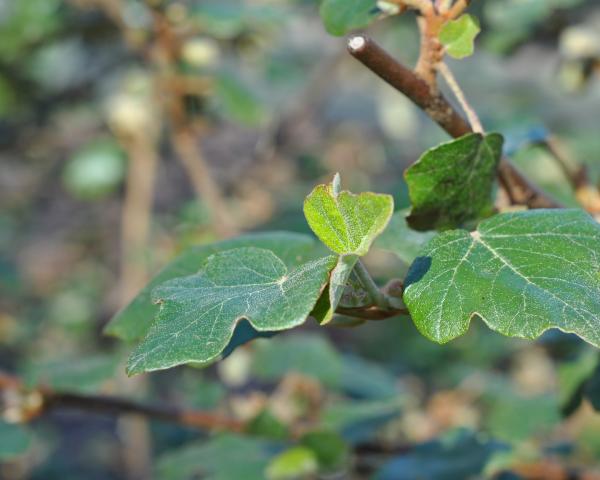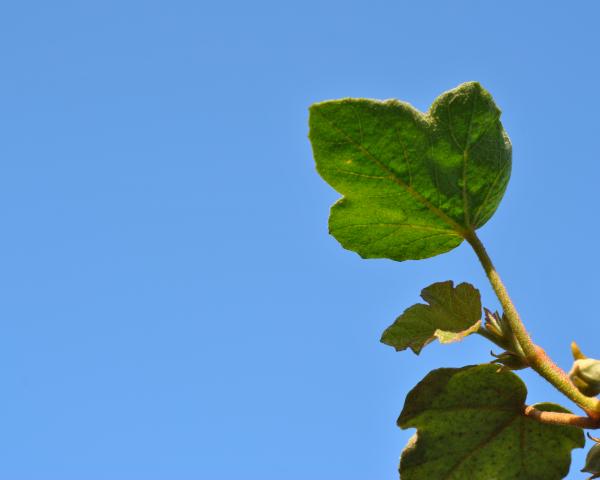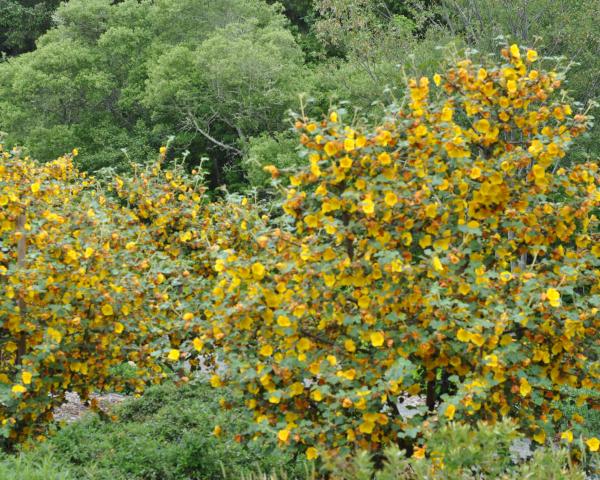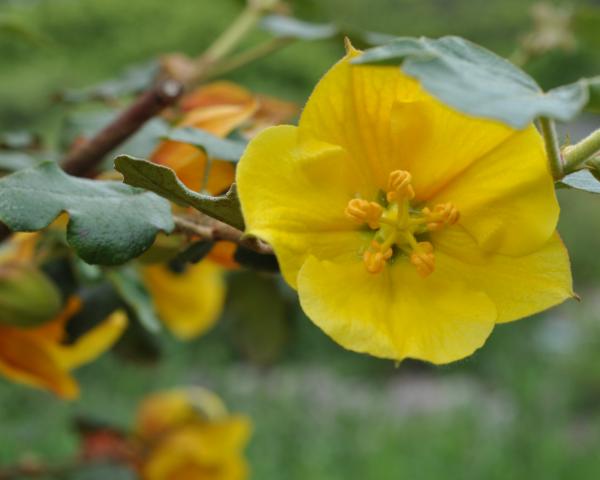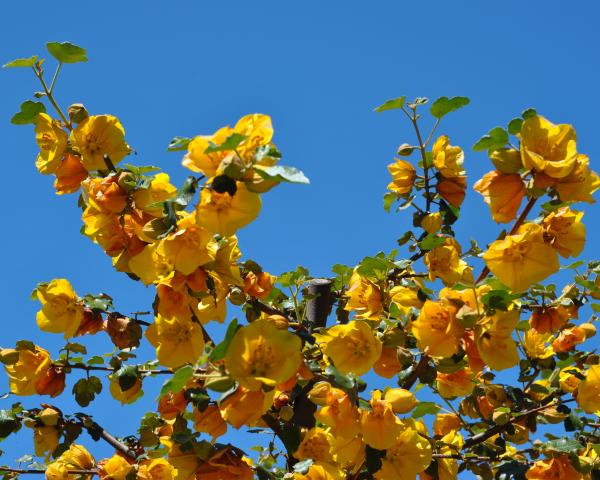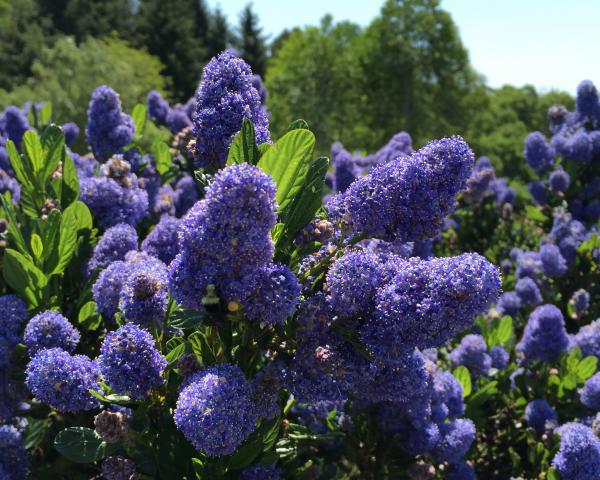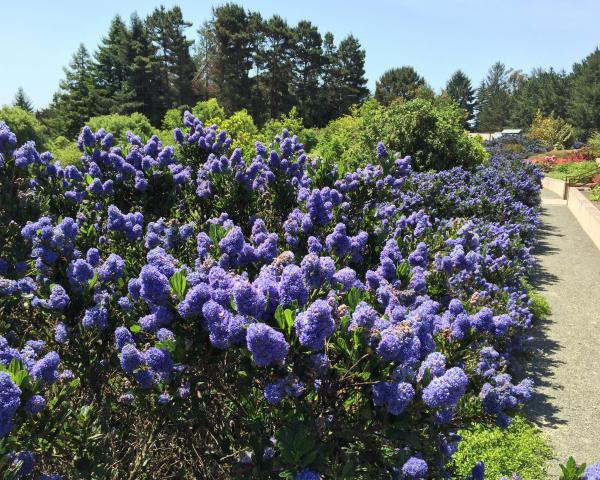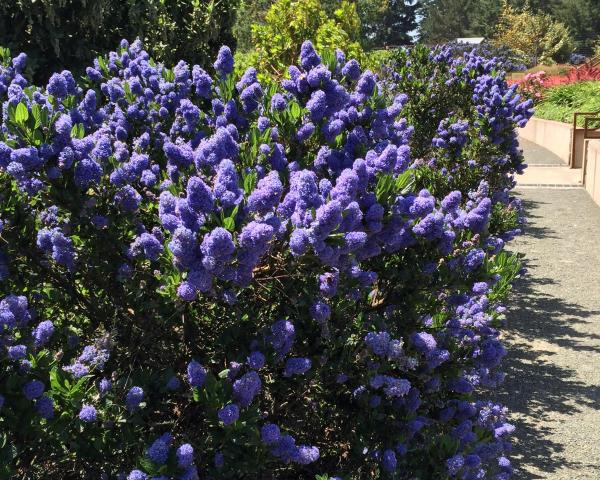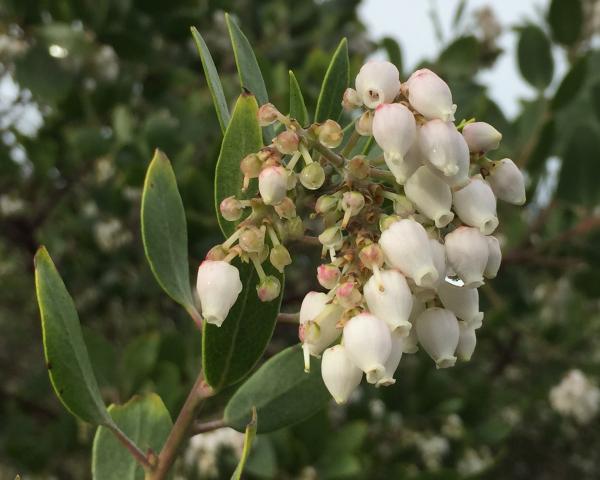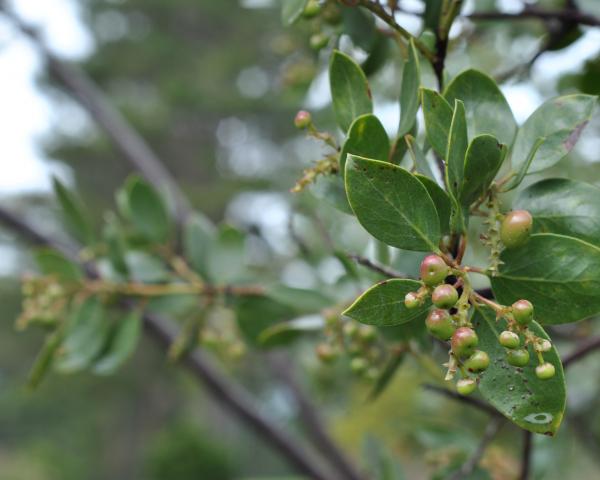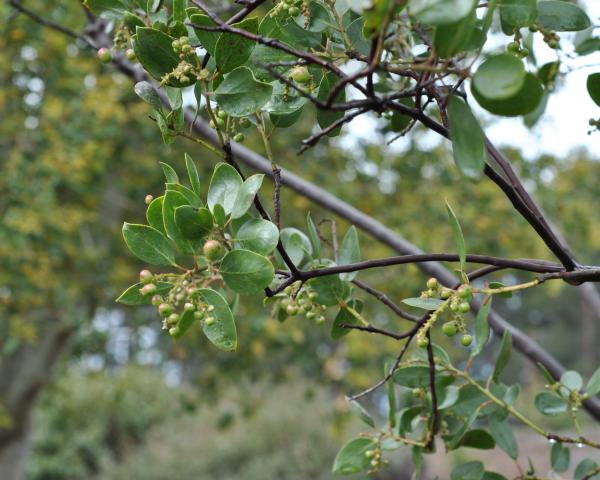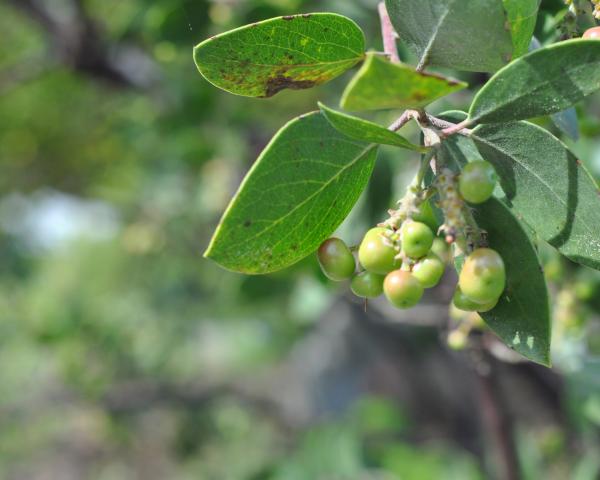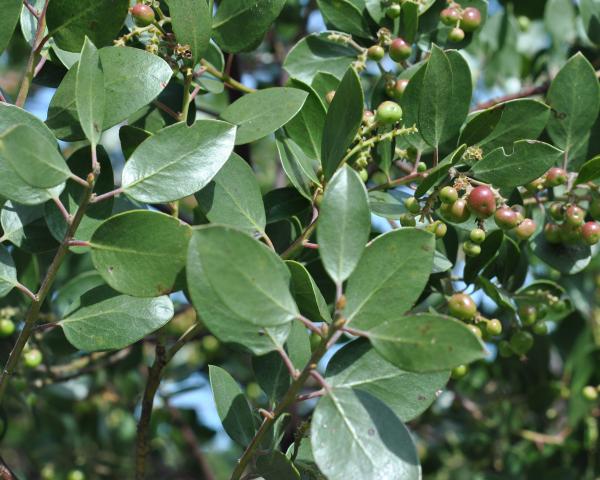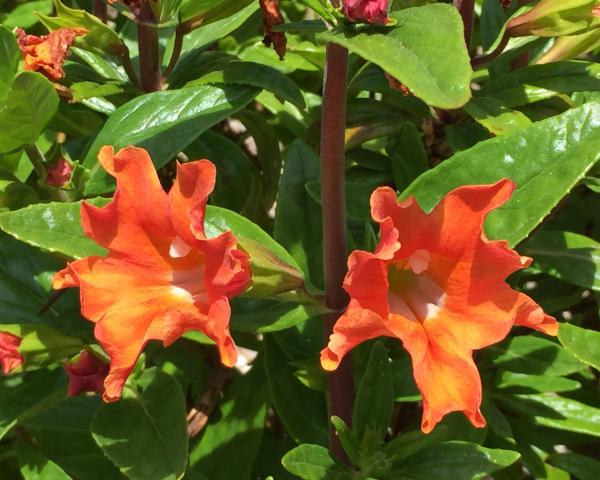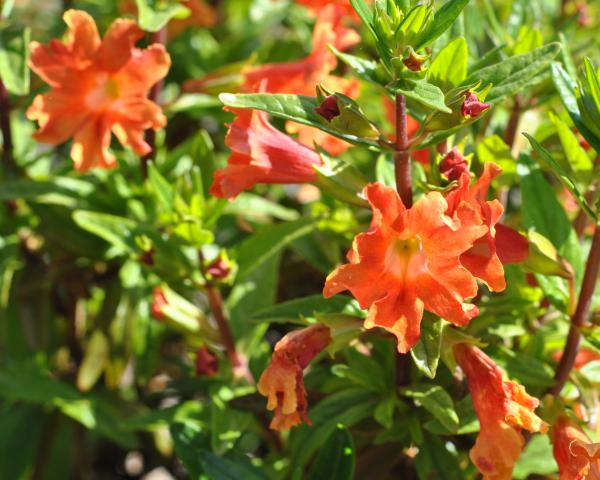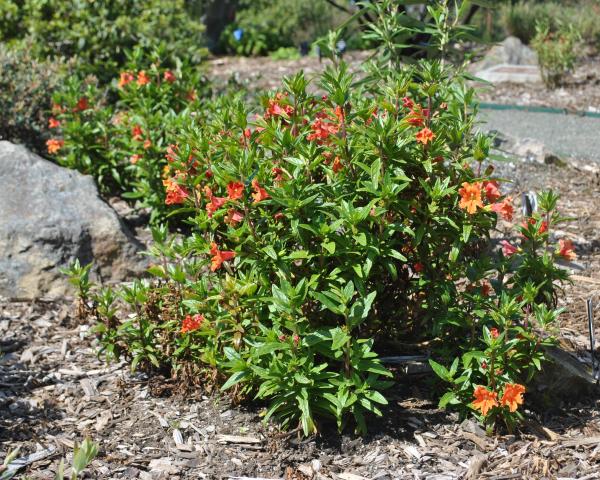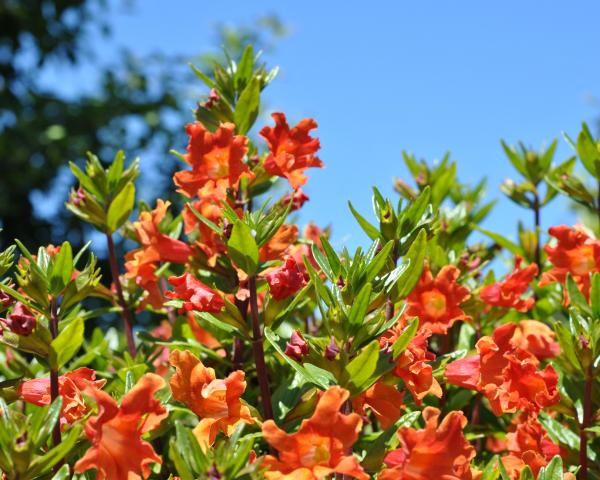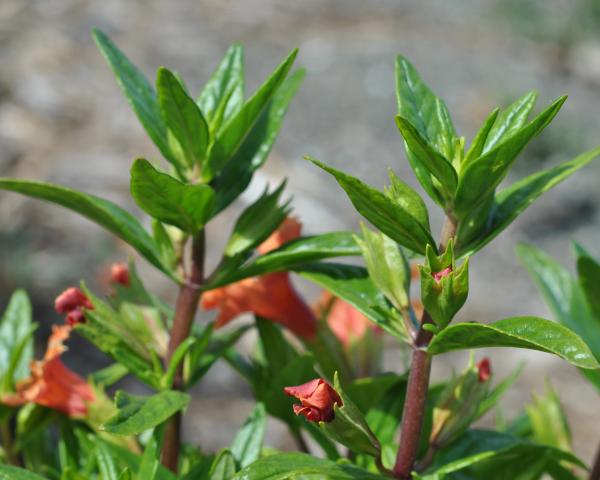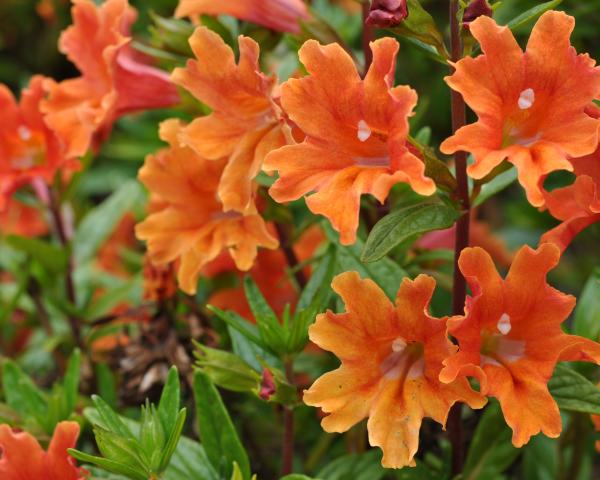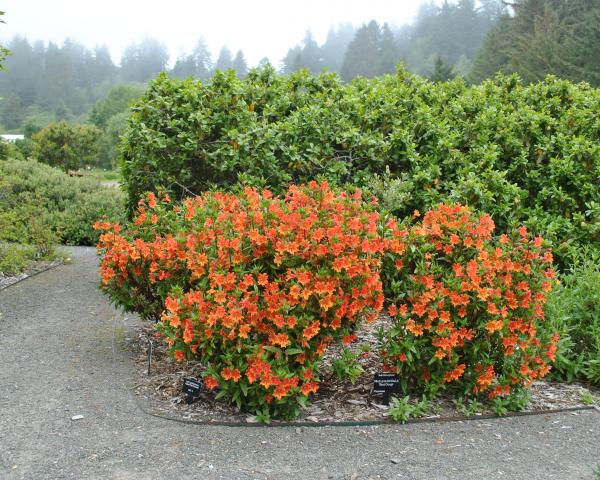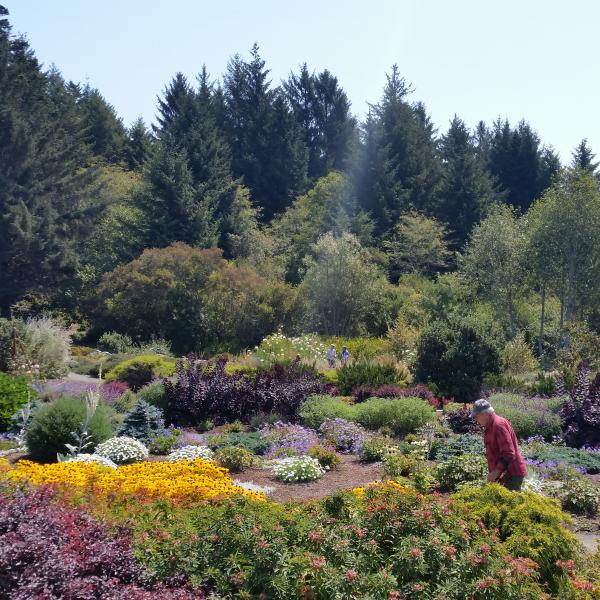Lost Coast Brewery Native Plant Garden
About the Garden
Encompassing well over an acre, the Lost Coast Brewery Native Plant Garden is a central educational and display component of the Humboldt Botanical Garden. This garden includes plants from the greater California Floristic Province, emphasizing those native to northwest California and southwest Oregon. Choosing species and horticultural selections from these regions allows us to provide the visitor with an understanding of the remarkable diversity of our native flora. In doing so, we are able to showcase a palette of particularly interesting native plants which perform well in our challenging north coast climate and soil conditions.
The changing seasons make it especially worthwhile to visit throughout the year. For a current seasonal description of the garden, see Spring & Summer 2024 In the Lost Coast Brewery Native Plant Garden by Mark Moore, Volunteer Curator.
The Lost Coast Brewery Native Plant Garden provides visitors with striking examples of how native plants, with their resource-conserving benefits and low maintenance requirements, can be aesthetically integrated into home landscapes.
Be inspired to learn more about our unique and diverse native flora and how to incorporate native plants into your existing landscaping or new garden design. Come visit the Lost Coast Brewery Native Plant Garden at the Humboldt Botanical Garden.
To view a list of plants currently present in the garden, click here: Printable Lost Coast Brewery Native Plant Garden Plant List
Features
- 4916
california_glory_fremontia.jpg
https://www.hbgf.org/sites/hbgf.org/files/california_glory_fremontia.jpgdsc_0489.jpg
https://www.hbgf.org/sites/hbgf.org/files/dsc_0489.jpgdsc_0492.jpg
https://www.hbgf.org/sites/hbgf.org/files/dsc_0492.jpgdsc_0494.jpg
https://www.hbgf.org/sites/hbgf.org/files/dsc_0494.jpgmay_24_100.jpg
https://www.hbgf.org/sites/hbgf.org/files/may_24_100.jpgmay_24_098.jpg
https://www.hbgf.org/sites/hbgf.org/files/may_24_098.jpgdsc_0543.jpg
https://www.hbgf.org/sites/hbgf.org/files/dsc_0543.jpg
Fremontodendron 'California Glory' (Fremontia)
Fremontia is a widely planted and beautiful California native. 'California Glory' is a hybrid of Fremontodendron californicum and F. mexicanum, and was introduced in 1962 by Rancho Santa Ana Botanic Garden. A fast grower, it can reach over 20 feet tall and as wide, but can be maintained through judicious pruning as a large shrub or small tree to complement other native plantings. From late spring through fall, Fremontia bears numerous large, attractive yellow blossoms. Although Fremontia are native to more inland and southern portions of the California Floristic Province, they can perform admirably in our north coastal environment when given excellent drainage, full sun, and protection from strong winds. Fremontia is notoriously intolerant of summer irrigation. In the LCBNPG five specimens of Fremontia can be seen just below the Paver Pavilion.
- 4917
ceanothus_skylark.jpg
https://www.hbgf.org/sites/hbgf.org/files/ceanothus_skylark.jpgimg_1722.jpg
https://www.hbgf.org/sites/hbgf.org/files/img_1722.jpgimg_1729.jpg
https://www.hbgf.org/sites/hbgf.org/files/img_1729.jpg
Ceanothus thyrsiflorus ‘Skylark’
Ceanothus ‘Skylark’ is a showy horticultural selection of our native “blueblossom” ceanothus. Its beautiful dark blue flowers are in bloom in the LCBNPG from spring through early summer. ‘Skylark’ ceanothus is drought tolerant but can also tolerate some water and does well in clay soils. With its small, shiny evergreen leaves, ‘Skylark’ looks good year round, and will grow to approximately five feet tall by six feet wide. A total of 35 young specimens of ‘Skylark’ ceanothus are present along the top border the LCBNPG. Planted in fall 2016 to replace older declining plants, they create a meandering row which defines the top edge of this garden. Several horticultural sources state this ceanothus “loves” adobe, which works to our advantage in the dense, clay soils of the LCBNPG. Look for our new ceanothus ‘Skylark’ plants to begin blooming in earnest in 2018.
- 4918
dr._hurd_manzanita.jpg
https://www.hbgf.org/sites/hbgf.org/files/dr._hurd_manzanita.jpg125.jpg
https://www.hbgf.org/sites/hbgf.org/files/125.jpg128.jpg
https://www.hbgf.org/sites/hbgf.org/files/128.jpgdsc_0524.jpg
https://www.hbgf.org/sites/hbgf.org/files/dsc_0524.jpgdsc_0525.jpg
https://www.hbgf.org/sites/hbgf.org/files/dsc_0525.jpg
Arctostaphylos manzanita 'Dr. Hurd' (Dr. Hurd manzanita)
Dr. Hurd manzanita is a beautiful evergreen shrub that performs well in our coastal environment. It grows fairly rapidly and may ultimately reach approximately ten feet tall and as wide. Like many manzanitas, the beautiful mahogany red stems are best displayed by careful and early pruning to open up the structure of branches. The pure white clusters of small urn shaped flowers cover this manzanita from mid to late winter to the delight of hummingbirds and bumblebees. On the north coast, Dr. Hurd manzanita should be planted in full sun. It will tolerate clay soils if given adequate drainage and no supplemental watering after the first year. One mature specimen and five newer plantings of Dr. Hurd manzanita are present in the LCBNPG.
- 4919
mimulus_blood_orange.jpg
https://www.hbgf.org/sites/hbgf.org/files/mimulus_blood_orange.jpgdsc_0481.jpg
https://www.hbgf.org/sites/hbgf.org/files/dsc_0481.jpgdsc_0484.jpg
https://www.hbgf.org/sites/hbgf.org/files/dsc_0484.jpgdsc_0503.jpg
https://www.hbgf.org/sites/hbgf.org/files/dsc_0503.jpgdsc_0533.jpg
https://www.hbgf.org/sites/hbgf.org/files/dsc_0533.jpgmay_24_082.jpg
https://www.hbgf.org/sites/hbgf.org/files/may_24_082.jpgmay_24_080.jpg
https://www.hbgf.org/sites/hbgf.org/files/may_24_080.jpg
Mimulus aurantiacus ‘Blood Orange’
‘Blood Orange’ monkeyflower is one of numerous horticultural selections developed over many decades from what is now botanically recognized as Mimulus aurantiacus. ‘Blood Orange’ monkeyflower is a small, heavily flowering semi-woody shrub reaching approximately two feet tall and as wide. It is tolerant of a range of soil types and moisture regimes and blooms in the LCBNPG over several months from spring through fall. Like other monkeyflowers, ‘Blood Orange’ benefits from frequent tip pruning to promote dense growth, removal of spent blooms to extend the flowering season, and annual cutting back to form sturdier plants. In the LCBNPG, ‘Blood Orange’ monkeyflower is planted in several locations easily viewed from the Paver Pavilion.

